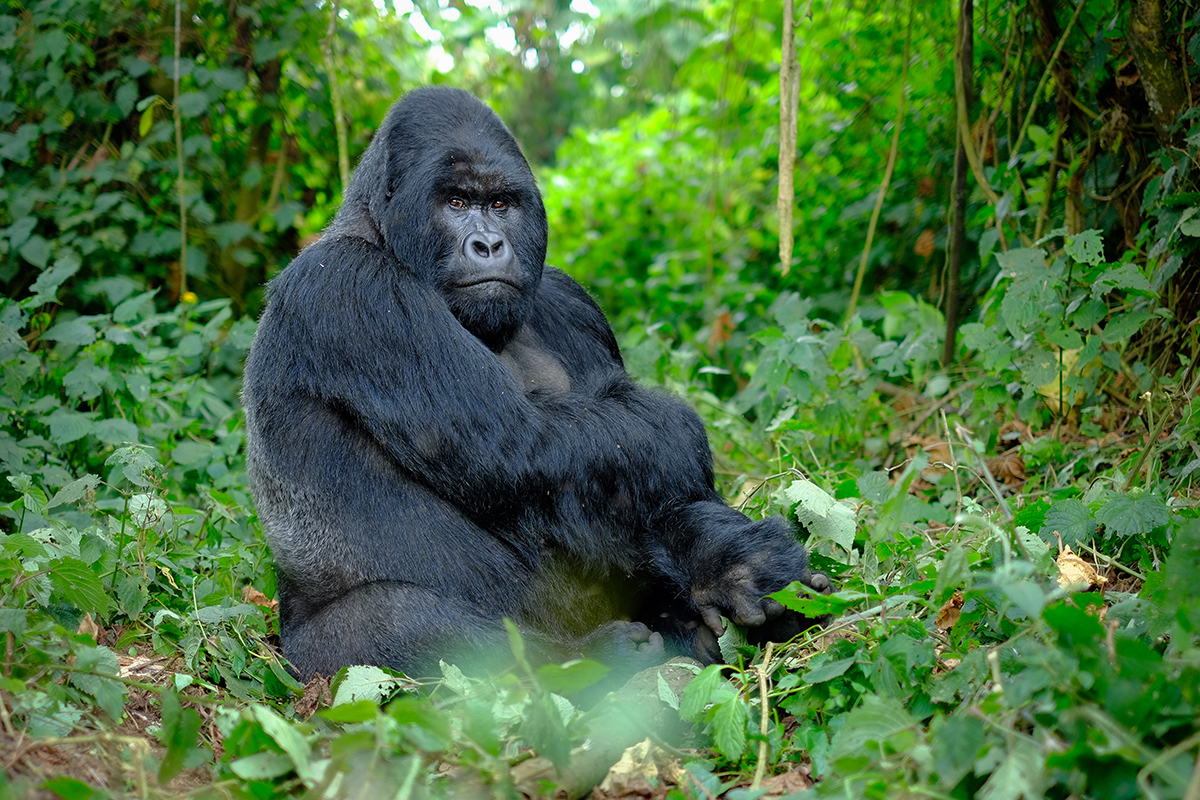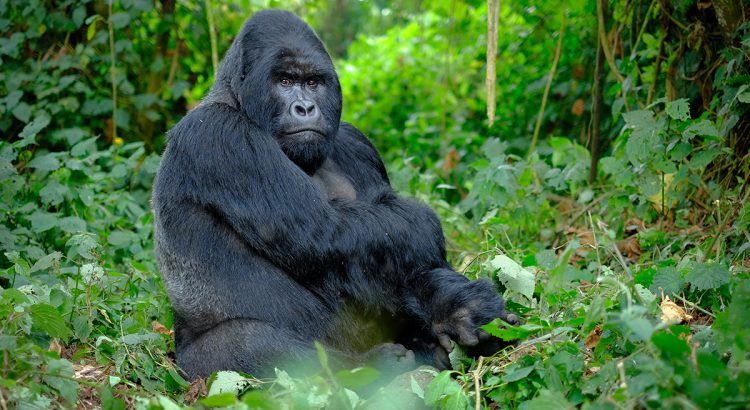30 May 2024

How can gorilla conservation be combined with the public health of the local population in Uganda? Walking with Gorillas will share her personal experience on this issue at an event to be held on Monday, 3 June at 6.30 p.m. in Uni Mail. The wildlife specialist will return to her journey and vision of gorilla conservation, which is based on the coexistence of humans and animals.
Passionate about primates, it was in 1996 that Gladys Kalema-Cikusoka officially became the first wildlife veterinarian for the Uganda Wildlife Authority (UWA). She then worked in protected areas, including the impenetrable forest of the Bwindi, habitat of the mountain gorilla. As tourists flock to try to spot gorillas in their natural habitat, its mission is to protect primates from the transmission of disease by visitors. As part of this work, she and her teams discover a scabies fireplace in gorillas leading to the death of a baby gorilla, with other primate family members being treated through ivermectin treatment. Subsequent research shows that this infection results from contact with the local population. This discovery marks a turning point in the vision of the conservation of Dr. Kalema-zikusoka. “I understood that it was impossible to protect gorillas without improving the health of their human neighbours,” the veterinarian says. She founded the non-governmental organization Conservation Through Public Health (CTPH) in 2003. Operating in partnership with local communities, the organization is implementing, step by step, the One Health approach, combining gorilla protection and public health.
Dr. Gladys Kalema-Sikusoka. Image: Kibuuka Mukisa/UNEP
Starting from concrete needs
When Dr. Kalema-zikusoka begins her work in the villages adjoining the forest, she realizes that it is counterproductive to deliver a ready-made solution. “It is necessary to really listen to members of the community. They are the only ones who really know what they and they need,’ she explains. In collaboration with the local population, the organization is setting up health and conservation teams in villages to address lack of access to care and provide hygiene and health education. There are now 429 teams around the Bwindi Forest, with as many men as well as women – an initiative that encourages the leadership of Bwindi.
The HTC is actively working with local communities to advance family planning and reproductive health initiatives. Recognizing that large families can influence resources and hinder personal health care, HTC programmes aim to empower families to make informed decisions about their reproductive health. By encouraging fewer families, parents are better able to preserve their health and invest in the education of their children. This holistic approach not only improves the well-being of the community, but also promotes a better understanding of the hygiene and conservation of fauna and flora. This provides the communities with the knowledge needed to prevent the spread of zoonotic diseases and to safeguard human and animal health.
Improving living conditions
The organization quickly realizes that living conditions and poverty are another risk factor for gorilla protection – a concern that crystallized during the COVID-19 pandemic. With the abrupt halt in tourism, local populations have been cut off from any income linked to visitors. Not only are the poaching growers, but in addition, some inhabitant have been forced to go hunting in the forest for food, increasing the risk of contact with the gorillas. This led to the death of one of them. The organization then developed a distribution of fast-growing seeds to increase food security for people. Other initiatives have been developed to enable communities to improve their living conditions. One of these resulted in the creation of Gorillas Conservation Coffee, a social enterprise that pays higher prices than the market to local farmers and local farmers living near the forest, thereby reducing their need to enter the forest habitat of the mountain gorilla to find food and firewood.
Lecture by Gladys Kalema-zikusoka, Conservation Through Public Health
Monday 3 June – 6.30 p.m. – Uni Mail, room MR280

